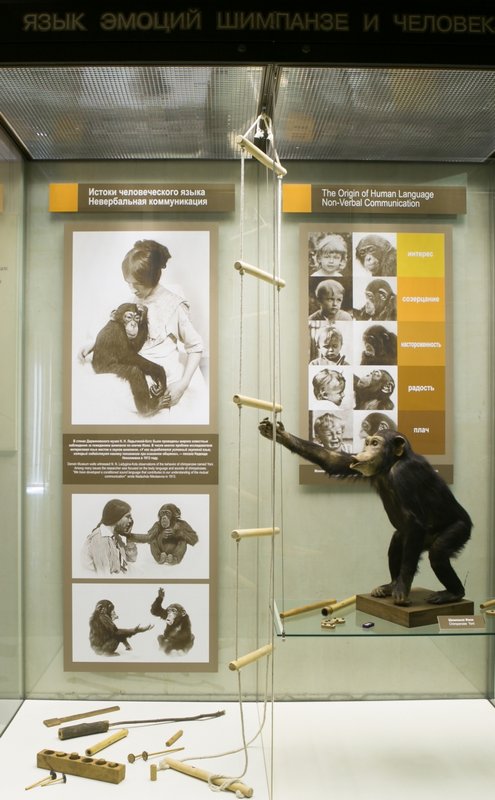The
exhibition tells about the development of animal behavior, its value for
survival and evolution. Instincts, learning, and elementary rational activity
closely interact with each other; their role in shaping the behavior depends on
the level of organization of the nervous system. The study of animal behavior
helps us to understand the biological roots of our own mind and the relation of
congenital and acquired human behavior.
Modern
science that studies the biological basis of animal behavior is called Ethology.
This modern discipline developed with the work of the Nobel Prize laureates
Konrad Lorenz (1903-1989) and Nikolaas Tinbergen (1907-1989). Their research
tried to answer the following questions: how a behavioral act is formed, what
its value for survival and how it evolved. Currently, not only biologists and
psychologists are interested in Ethology but also sociologists, philosophers,
anthropologists, and linguists.
The
exposition tells about the structure of the nervous system of various species, the
inheritance pattern of behavioral responses, the role of instincts, learning
and rational activities in shaping the behavior of animals which stand on
different levels of the organization.
One of the
basic aspects of behavior is communication, i.e. the transmission of
information from one animal to another by means of special signals. The source
of information may be an animal odor, audio signals, certain poses, and facial expressions.
There can
be found similarities between communication of animals and the communicative
behavior of a people. Although the human language and intellect are much more
complex than communication and cognitive abilities of animals, there is still
no clear answer on whether there is a qualitative difference between animals
and human communication. Undoubtedly, "the evolution of elementary
rational activity of human ancestors took a very long time, before giving a
truly gigantic flash of the human mind" (L.V. Krushinsky).
This
showcase is dedicated to the questions of classic Ethology, the structure and
mechanisms of behavior. Life activity of most animals is based on their innate
instinctive behavior. It occurs in response to certain stimulation. Instincts
give an animal a set of ready adaptive reactions.
Behavioral genetics.
Caring for offspring

The
exhibits in the showcase present the results of experiments on the inheritance
of instinctive behavior in different animals. Instincts are fixed by natural
selection and transmitted genetically from generation to generation. Special
attention is paid to the evolutionary scenario of care for the offspring from
complete indifference to the fate of the younger generation to care for the
kids. Special attention is given to the evolutionary scenario of caring for offspring,
from complete indifference to gentle care.
Communication

Life in a
family, pack or herd is impossible without information exchange, i.e.
communication. Information can be transferred by the animal odors and sounds as
well as facial expressions, and certain poses. Each species has its own
“dictionary” for communicating with partners. But there is a universal
interspecies language. Particular signals of threat, anxiety or peace are
usually understood by most species.
Expressing emotions: chimpanzees and humans

The showcase
is dedicated to unique researches undertaken in 1913-1915 in the State Darwin
Museum. The Doctor of Biological Sciences and co-founder of the Museum Nadezhda
Nikolaevna Ladygina-Kohts was interested in similarities and differences of the
gestures and sounds language among humans and apes. The results of her comparative
research and experiments on her own son Rudolph and a baby chimp named Yoni
were published in the scientific work “Infant chimpanzee and human child in
their games, habits and expressive movements” (1935).










